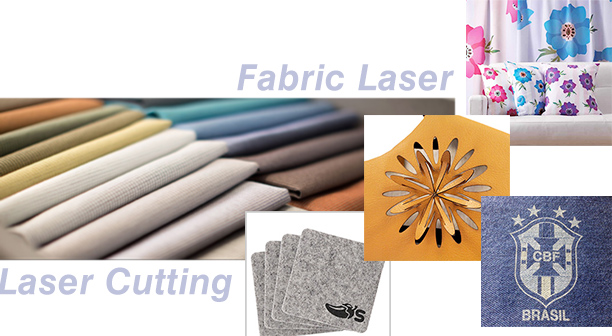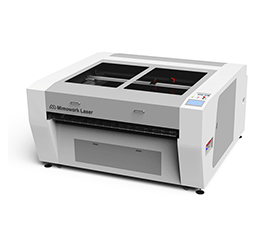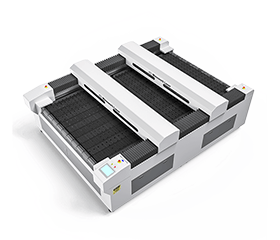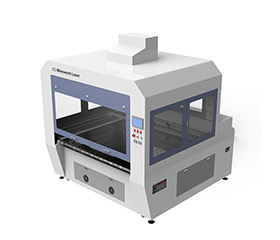When diving into the world of fabric cutting with a CO2 laser cutter, it’s essential to get to know your materials first. Whether you’re working with a beautiful piece of fabric or a whole roll, understanding its properties can save you both fabric and time. Different fabrics behave differently, and this can make a big difference in how you set up your laser cutting machine.
Take Cordura, for example. It’s one of the toughest fabrics out there, known for its incredible durability. A standard CO2 laser engraver just won’t cut it (pun intended) for this material. So, before you start cutting, make sure you’re familiar with the fabric you’re using.
It’ll help you choose the right machine and settings, ensuring a smooth and efficient cutting process!
To have a better understanding of laser cutting textiles, let’s take a look at the 12 most popular types of fabric that involve laser cutting and engraving. Please keep in mind that there are hundreds of different types of fabric that are extremely suitable for CO2 laser processing.
The Different Types of Fabric
Fabric is cloth produced by weaving or knitting textile fibers. Broken down as a whole, the fabric can be distinguished by the material itself (natural vs. synthetic) and the method of production (woven vs. knitted)
Woven vs Knitted
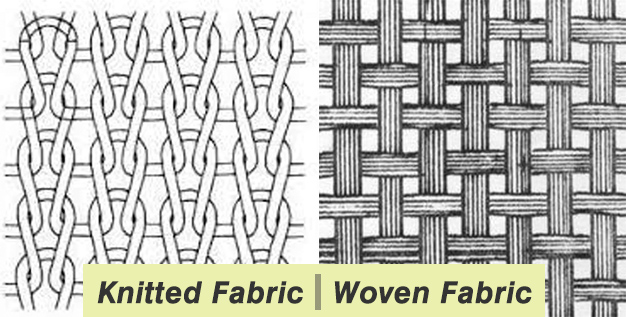
The main difference between woven and knit fabrics is in the yarn or thread that composes them. A knit fabric is made up of a single yarn, looped continuously to produce a braided look. Multiple yarns comprise a woven fabric, crossing each other at right angles to form the grain.
Examples of knit fabrics: lace, lycra, and mesh
Examples of woven fabrics: denim, linen, satin, silk, chiffon, and crepe,
Natural vs Synthetic
Fiber can be simply categorized into natural fiber and synthetic fibers.
Natural fibers are obtained from plants and animals. For example, wool comes from sheep, cotton comes from plants and silk comes from silkworms.
Synthetic fibers are created by men, such as Cordura, Kevlar, and other technical textiles.
Now, Let’s Take a Close Look at the 12 Different Types of Fabric
1. Cotton
Cotton is arguably the most versatile and beloved fabric out there. It’s known for its breathability, softness, and durability—plus, it’s a breeze to wash and care for. These fantastic qualities make cotton a go-to choice for everything from clothing to home decor and everyday essentials.
When it comes to creating customized products, cotton really shines. Using laser cutting for cotton items not only ensures precision but also makes the process efficient and cost-effective. So, if you're looking to craft something special, cotton is definitely a fabric worth considering!
2. Denim
Denim is known for its vivid texture, sturdiness, and durability and is often used to make jeans, jackets, and shirts. You can easily use galvo laser marking machine to create a crisp, white engraving on denim and add extra design to the fabric.
3. Leather
Leather—both natural and synthetic—holds a special place in the hearts of designers. It’s a staple for crafting shoes, clothing, furniture, and even vehicle interiors. Suede, a unique type of leather, features the flesh side turned outward, giving it that soft, velvety touch we all love.
The great news is that both leather and synthetic leather can be cut and engraved with incredible precision using a CO2 laser machine.
4. Silk
Silk is celebrated as the strongest natural textile in the world. This shimmering fabric boasts a luxurious satin texture that feels amazing against the skin. Its breathability allows for airflow, making it a perfect choice for cool, comfortable summer garments.
When you wear silk, you’re not just wearing a fabric; you’re embracing elegance!
5. Lace
Lace is the ultimate decorative fabric, versatile enough for everything from intricate collars and shawls to curtains, bridal wear, and lingerie. With advancements in technology, like the MimoWork Vision Laser Machine, cutting lace patterns has never been easier.
This machine can automatically recognize lace designs and cut them with precision and continuity, making it a dream for any designer!
6. Linen
Linen is one of humanity's oldest fabrics, made from natural flax fibers. While it takes a bit longer to harvest and weave compared to cotton, its unique qualities make it worth the effort. Linen is often used for bedding because it’s soft, comfortable, and dries much faster than cotton.
Although CO2 lasers are great for cutting linen, surprisingly, only a handful of manufacturers take advantage of this technology for bedding production.
7. Velvet
The term “velvet” comes from the Italian word velluto, meaning “shaggy.” This luxurious fabric features a smooth, flat nap, making it perfect for clothing, curtains, and sofa covers.
While velvet was once exclusively made from silk, today you’ll find it crafted from various synthetic fibers, which has made it more affordable without sacrificing that plush feel.
8. Polyester
Polyester, a catch-all term for artificial polymers, has become a staple in both industry and everyday items. Made from polyester yarns and fibers, this material is known for its incredible resilience—resisting shrinking, stretching, and wrinkling.
It’s durable and easy to clean, making it a favorite for many. Plus, with blending technology, polyester can be combined with other natural and synthetic fabrics to enhance its properties, improving the overall wearing experience and expanding its uses in industrial textiles.
9. Chiffon
Chiffon is a lightweight, semi-transparent fabric known for its delicate weave. Its elegant drape makes it a popular choice for nightgowns, evening wear, and blouses designed for special occasions. Because chiffon is so light, traditional cutting methods like CNC Routers can easily damage its edges.
Fortunately, fabric laser cutters are perfect for handling this type of material, ensuring clean, precise cuts every time.
10. Crepe
Crepe is a lightweight fabric with a unique twisted weave that gives it a lovely, bumpy texture. Its ability to resist wrinkles makes it a favorite for creating beautiful drapes, making it ideal for blouses, dresses, and even home decor items like curtains.
With its graceful flow, crepe adds a touch of sophistication to any wardrobe or setting.
11. Satin
Satin is all about that smooth, glossy finish! This type of weave features a stunningly sleek surface, with silk satin being the go-to choice for evening dresses. The weaving method used creates fewer interlaces, resulting in that luxurious shine we adore.
Plus, when using a CO2 laser fabric cutter, you get smooth, clean edges on satin, enhancing the overall quality of your finished garments. It’s a win-win for any designer!
12. Synthetics
As opposed to natural fiber, synthetic fiber is man-made by a mass of researchers in extruding into practical synthetic and composite material. Composite materials and synthetic textiles have been put a lot of energy into researching and applied in industrial production and daily life, developed into varieties of excellent and useful functions. Nylon, spandex, coated fabric, non-woven, acrylic, foam, felt, and polyolefin are mainly popular synthetical fabrics, especially polyester and nylon, which are made into a wide range of industrial fabrics, clothing, home textiles, etc.
Video Display - Denim Fabric Laser Cut
Why Laser Cut Fabric?
>> Contactless Processing: Laser cutting eliminates the crushing and dragging of material, ensuring clean, precise cuts without damaging the fabric.
>> Sealed Edges: The thermal treatment from lasers prevents fraying and seals the edges, giving a polished finish to your projects.
>> High Speed and Precision: Continuous high-speed cutting combined with exceptional precision boosts productivity, allowing for efficient production.
>> Versatility with Composite Fabrics: A wide variety of composite fabrics can be easily laser cut, expanding your creative possibilities.
>> Multi-Functionality: Engraving, marking, and cutting can all be accomplished in a single processing step, streamlining your workflow.
>> No Material Fixation: The MimoWork vacuum working table holds materials securely without the need for additional fixation, enhancing ease of use.
Comparison | Laser Cutter, Knife, and Die Cutter

Recommended Fabric Laser Cutter
We sincerely recommend that you look for more professional advice about cutting and engraving textiles from MimoWork Laser before investing in a CO2 laser machine and our special options for textile processing.
Learn More about Fabric Laser Cutter and The Operation Guide
Post time: Sep-09-2022


